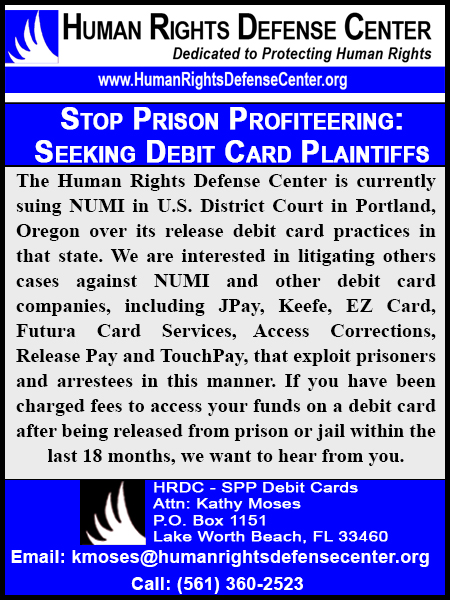Microbiome: The Latest in Cutting Edge Forensics
by Michael Fortino
One week after the attacks of September 11, 2001, letters containing anthrax were mailed to several news outlets, and to the offices of two U.S. Senators, forcing the FBI to seek new and innovative methods to determine who might be behind this most recent domestic terroristic act. As such, forensic investigators, in adapting to this new form of terrorism, turned to an emerging new forensic analysis that samples and identifies the human microbiome.
Bruce Budowle, formerly with the FBI, and now a geneticist with the University of North Texas Health Science Center, commenting about the 9/11 investigations, explains, “The technology at the time was limited, so we created the field of microbial forensics.” Budowle continued, “It was dedicated to the analysis of microbial evidence related to a bioterrorist act or bio-crime.”
After spending $250,000 to sequence each sample of the anthrax spores, the investigation led to a government scientist in a lab in Maryland who committed suicide after having been named a suspect. This initial investigative success stimulated an entirely new field of analysis that has only grown more prevalent with the advent of emerging biomarker technologies.
The National Institute of Health sponsored a consortium of universities and research laboratories that worked from 2007 to 2016 on the identification of those microbial communities that occupy the human body. Today, that consortium is known as the Human Microbiome Project.
The microbiome, in layman’s terms, is the mass of bacteria, the host of viruses, and a myriad of other microscopic organisms that can be found living within our gut, on our skin, and levitating in the immediate air space around our body. This composite of living bacteria contributes significantly to our own body’s mass.
According to forensicmag.com, “For a 200-pound adult, about two or three pounds comes from microorganisms that aren’t actually the person. For most people, that means foreign microbes in and on their body weigh about as much as their brain.”
Researchers like Yong Jin Lee, a microbiologist at Albany State University in Georgia, have looked into the viability of using the unique mix of microbes found on each person to identify who may have come into contact with an object such as a weapon, a bomb, or some other crime-related evidence. Lee explains, “We swabbed the objects [in the study] to get some microbial signature, not focusing on the human DNA because whenever you touch an object, you don’t necessarily leave human cells.” Lee continues, “But we do leave our microorganisms on an object, so we swab to get microbial DNA.”
The study showed that the microbial signature detected was distinguishable and unique to the person who touched that object at some point in time. Later research by Budowle confirmed this uniqueness and showed how it could be utilized to identify the person based on this unique microbial signature.
“These studies attributed skin microbiome samples collected from the hand to their respective host with up to 100% accuracy,” Budowle wrote in a 2015 report on his research. “[T]his finding is significant for the potential use of skin microbiome profiling ... to assist in criminal investigations, such as robberies, homicides, and sexual assaults.”
The technology however is not fool-proof and is still under development. According to Rob Knight, Director of the Center for Microbiome Innovation at the University of California San Diego, who has identified potential limitation of the technology, cautioned investigators after looking into the possibility of tracing an object’s history of contact. These shortcomings became prevalent after his lab evaluated money touched by multiple people. The intention was to attempt to determine how many people may have come in contact with a dollar bill by identifying the microbial markers remaining on that piece of currency.
It turns out that the most recent person to touch an object will actually leave traces of their microbial signature, which could entirely override all prior contact. This could result in major setbacks at an active crime scene.
“Suppose you find something at a crime scene, and someone inadvertently picks it up,” Knight said. “Can you figure out who touched it before them? I’m not saying it’s impossible but it’s a lot more challenging because whoever is the last person to handle an object tends to be the one leaving trace evidence on it.”
Further innovation in the field may break the “last person” barrier, especially as new technologies emerge and cloud computing power improves. Similar progress has been made on multiple human DNA donor sequencing just within the last decade.
Costs and streamlining continue to be the driving force behind scientific advancements.
“If it’s $500,000 bucks a sample, [the forensic labs are] not going to do it,” Knight said. “If it’s $5 a sample, then it could be routine.”
As for reducing complexity, Knight speculates that an easy-to-use software program for collecting and processing the data may soon be developed.
“What we need to do for microbes is the same sort of thing we do for sending photos or videos by phone,” Knight suggested. “How do we take that noisy, highly technical data and do data processing on it so that people get a clear picture they can interpret?”
Budowle expects rapid development in this field such that microbiome analysis will become routine in criminal prosecutions in “a five to 20-year kind of schedule.” He posited that analysis will advance so much that by the year 2040, “we’re going to say we were in the stone ages in 2020.”
Source: forensicmag.com, mosheriffs.com
As a digital subscriber to Criminal Legal News, you can access full text and downloads for this and other premium content.
Already a subscriber? Login





